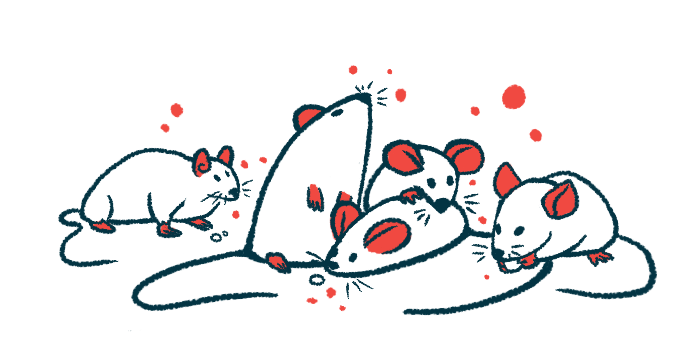Worse PH Linked to Changes in Gut Microbiome, Metabolism in Rats
New study finds changes in 'gut-lung axis' may drive PH development

Pulmonary hypertension (PH) is linked with changes in the gut microbiome — the vast community of bacteria, fungi, and viruses that colonize the gastrointestinal tract — and an imbalance in protective versus disease-related metabolites, or molecules that take part in metabolism, according to a rat model of the disease.
These findings strengthen a “gut-lung axis” or communication route that, when altered, may drive PH development, researchers say.
Such “changes have important implications for host-microbiome interactions and potential gut-lung communication through the ‘gut-lung axis,'” the team wrote.
The study “Microbiome and metabolome dysbiosis of the gut-lung axis in pulmonary hypertension” was published in the journal Microbiological Research.
PH is a chronic and progressive disease marked by elevated blood pressure in the right ventricle — the right ventricular systolic pressure or RVSP — part of the heart that pumps blood through the lungs. This causes the right side of the heart to work harder to pump blood.
But the effects of PH can extend beyond the lungs and heart. Data from pulmonary arterial hypertension (PAH) patients and animal models have linked PH with changes in the composition of the gut microbiome.
Exploring the gut-lung axis
That microbiome helps to maintain a balanced gut function and influences other body functions, including immune and metabolic functions. A gut microbial disruption, called a dysbiosis, has been linked with respiratory diseases.
In addition, recent studies suggest that metabolic alterations prompt the development of PH.
Now, a team led by researchers in China and the U.S. used a rat model of PH to assess the gut microbiome and the interplay between dysbiosis and metabolic changes.
Specifically, PH was induced by a surgical procedure called left pulmonary artery ligation (LPAL).
First, the researchers confirmed that, five weeks after the surgical procedure, the rats had increased blood pressure in the heart’s right side. This was accompanied by increased thickness of the wall of the pulmonary artery, the large blood vessel carrying blood from the heart to the lungs.
Compared with rats that underwent a sham surgical procedure and served as controls, animals with PH-like disease showed significantly higher fibrosis (scarring), muscular thickness, and shorter villus. The villus are the small finger-like projections that line the intestine and are responsible for absorption.
The gut protective barrier also was disrupted in the PH rats, as shown by a reduced presence of two proteins called occludin and ZO-1. Overall, these findings indicate that rats with PH have an impaired gut barrier, which is linked with inflammatory responses and a higher infection risk.
Microbiome analysis in the PH rats showed their gut microbiome was altered when compared with controls. The analysis specifically showed that bacteria from the Desulfovibrio and Eubacterium genera were significantly less represented in PH rats. The opposite was seen regarding the Sporobacter genus, which was significantly increased in the PH group.
The team then conducted a statistical analysis of how changes in the relative abundance of these gut microbes correlated with RVSP. Results showed a positive correlation — meaning the greater one was, the greater the other was — between RVSP and both Sporobacter and a Lachnospiracea bacterial species.
In contrast, a higher abundance of Desulfovibrio and Eubacterium bacteria were linked with a lower RVSP.
Further analysis found an enrichment in pathways related with metabolism of amino acids, the building blocks of proteins, in PH rats. Meanwhile, in control rats, fatty acids metabolism was more prominent.
“These results suggested that the potential mechanism of gut microbes affecting PH may be driven by specific bacterial taxa [groups] involved in the amino acid metabolic pathway and fatty acid metabolic pathways,” the scientists wrote.
Next, they analyzed the metabolic content of stool samples from PH and control rats. A total of 240 metabolites were identified whose abundance differed between both groups. In all, 34 metabolites were increased in PH rats, including amino acids and molecules involved in nervous system activation.
Analysis of lung tissue also showed significant changes in 228 metabolites, of which 61 metabolites were higher in PH rats. These included long-chain fatty acids and inflammatory molecules such as leukotrienes.
Finally, the results showed that altered metabolites from both the gut and the lung were correlated with the presence of specific genera of microbes in the LPAL group.
Overall, “these findings enriched our understanding of the unique profile in the gut and lung and their close correlation through the potential ‘gut-lung axis’ in PH induced by long- term high flow, providing novel insights into novel therapeutic, diagnostic or management paradigms for this subtype of PH,” the investigators concluded.








